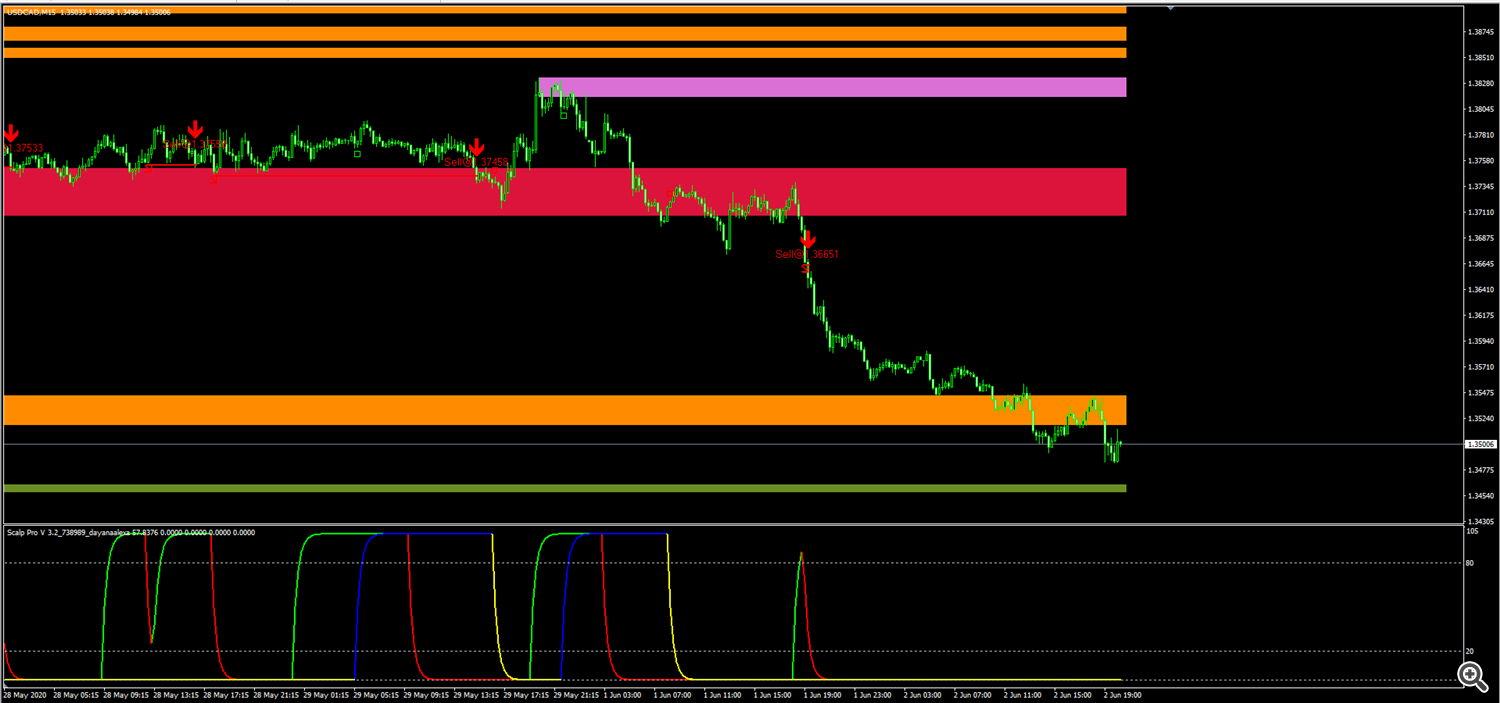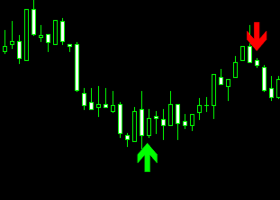
"Forex Trading Tools: How to Use Them to Your Advantage"
When you are trading Forex, it is important to have the right tools to help you make the most of your trades.
There are a number of different tools that you can use, and each one has its own benefits.
In this article, we will discuss some of the most popular Forex trading tools and how to use them to your advantage.
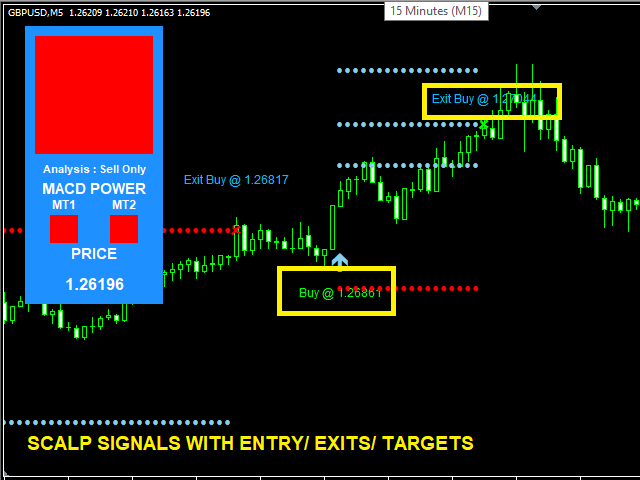
I. Introduction
In this introduction, we will discuss the different aspects of the novel that we will be addressing in our upcoming chapters.
We will provide a brief summary of the plot, as well as highlight some of the main themes and motifs that are present in the text.
Finally, we will introduce our main characters and discuss their roles in the story.
A. What are Forex Trading Tools?
Forex trading tools are important for every trader as they help in making informed trading decisions.
The most popular tools used by forex traders are technical indicators and price patterns.
Technical indicators are used to identify current market trends and price patterns are used to identify potential reversals and breakout points.
B. How do Forex Trading Tools work?
https://www.mql5.com/en/market/product/50592
Forex trading tools are essential for making good trading decisions.
Most of these tools are available on the internet for free, but some traders choose to pay for more sophisticated tools.
In this chapter, we'll take a look at some of the most popular forex trading tools and explore how they can help you make better trading decisions.
One of the most popular tools for trading is a technical analysis tool.
These tools allow you to see the historical price patterns of a currency pair.
This can help you to identify buying and selling opportunities. One of the most popular technical analysis tools is the Moving Average Convergence Divergence, or MACD.
The MACD is a tool that allows you to see the relationship between two moving averages of a currency pair. It can be used to identify trend reversals and to spot buying and selling opportunities.
Another popular tool is the Fibonacci tool. The Fibonacci tool helps you to identify support and resistance levels.
Support levels are areas where the price of a currency pair has tended to rebound in the past.
Resistance levels are areas where the price of a currency pair has tended to reverse in the past.
The Fibonacci tool can also be used to identify potential retracement levels.
A third popular tool is the candlestick chart.
Candlestick charts are used to identify the direction of the market, the strength of the market, and the possible end of a trend.
They are also used to identify patterns, such as bullish and bearish patterns.
There are many other popular forex trading tools, including the Bollinger Bands, the Stochastic Oscillator, and the Relative Strength Index.
These tools can be used to help you make better trading
C. What are the benefits of using Forex Trading Tools?
https://www.mql5.com/en/market/product/47776
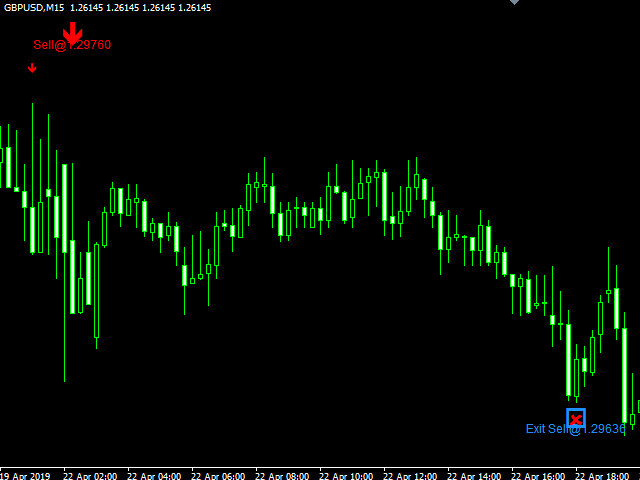
Forex trading tools offer a number of benefits for traders.
The most obvious benefit is that they help traders to make better trade decisions.
Forex trading tools provide traders with information about market conditions and trends, which can help them to anticipate price movements and make more informed trading decisions.
Another benefit of using forex trading tools is that they can help traders to manage their risk.
Forex trading tools can help traders to identify potential risks and set limits on their losses. This can help traders to protect their capital and avoid costly mistakes.
Finally, forex trading tools can help traders to improve their trading performance.
Forex trading tools can provide traders with analytical data and technical indicators, which can help them to better understand the market and make more profitable trades.
II. Types of Forex Trading Tools
There are a variety of different Forex trading tools that are available to traders.
These tools can be used to help traders make more informed trading decisions. The most common type of Forex trading tool is a technical analysis tool.
Technical analysis tools allow traders to see how prices are moving and to identify potential trading opportunities.
Other common Forex trading tools include trading platforms, economic indicators, and news services.
A. Technical Analysis Tools
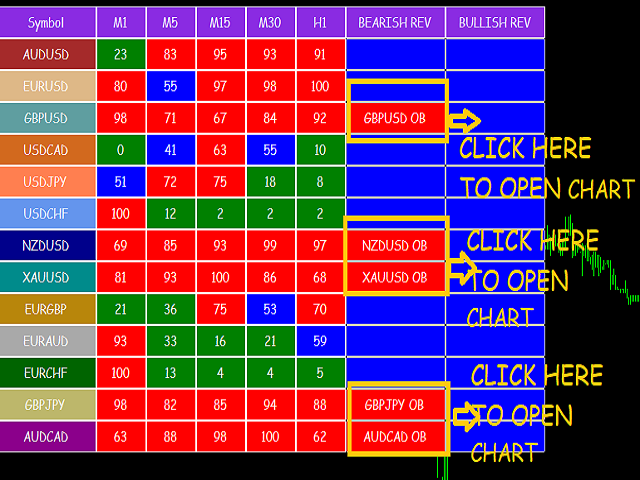
There are many different types of technical analysis tools that are available to traders.
These tools can be used to help traders make informed decisions about where to enter and exit trades.
Some of the most popular technical analysis tools include moving averages, MACD, Bollinger Bands, and RSI.
Each of these tools has its own unique properties and can be used to generate different types of trading signals.
It is important for traders to familiarize themselves with these tools and learn how to use them effectively. This will help them to make better trading decisions and improve their trading results.
1. Trend Lines
Trend lines are important for technical analysis because they can help identify possible support and resistance levels.
They can also be used to predict future price movements. Typically, trend lines are drawn between two or more points on a chart.
A trend line is considered to be valid as long as it continues to be supported by price action.
2. Moving Averages
The most popular type of moving average is the simple moving average, which is calculated by taking the average of a security's closing prices over a given number of time periods.
For example, to calculate a 10-day simple moving average, you would add up the closing prices for the past 10 days and divide by 10. A moving average can be used to smooth out price fluctuations and identify trends.
3. Oscillators
An oscillator is a circuit that generates a periodic signal.
The most common type of oscillator is an RC oscillator, which uses a resistor and capacitor to generate a sinusoidal signal. Other types of oscillators include crystal oscillators and LC oscillators.
4. Fibonacci Retracement
A Fibonacci retracement is a technical analysis tool that is used to identify potential support and resistance levels.
The tool is based on the Fibonacci sequence, which is a series of numbers that are calculated by adding the two previous numbers in the sequence.
The Fibonacci retracement tool uses these numbers to create a series of lines that indicate support and resistance levels.
The tool can be used to identify the potential reversal points of a trend.
When a trend is in progress, the Fibonacci retracement tool can be used to identify the points at which the trend is likely to reverse.
These points can be used to enter or exit a trade.
The Fibonacci retracement tool can also be used to identify potential breakout points.
When a trend is in progress, the tool can be used to identify the points at which the trend is likely to break out.
These points can be used to enter a trade or to set a stop loss order.
5. Elliot Wave Theory
The Elliott Wave Theory is a technical analysis tool that helps investors predict future price movements.
It is based on the idea that prices move in waves, and that these waves can be used to predict future movements.
The theory was developed by Ralph Nelson Elliott in the 1930s, and has been used by investors ever since.
The Elliott Wave Theory is a complex theory, and is not easy to learn. However, it can be a powerful tool for predicting price movements.
The theory is based on the idea that prices move in waves, and that these waves can be used to predict future movements.
There are five waves in an Elliott Wave pattern: three motive waves and two corrective waves.
The motive waves are bullish, and the corrective waves are bearish. The theory can be used to predict both short-term and long-term price movements.
The Elliott Wave Theory is a complex theory, and it takes some time to learn how to use it effectively.
However, it can be a very powerful tool for predicting price movements.
The theory is based on the idea that prices move in waves, and that these waves can be used to predict future movements.
There are five waves in an Elliott Wave pattern: three motive waves and two corrective waves.
The motive waves are bullish, and the corrective waves are bearish. The theory can be used to predict both short-term and long-term price movements.
6. Chart Patterns
When it comes to trading, chart patterns are essential for any successful trader.
These patterns can give you a good idea of when a stock is oversold or overbought, and can help you make more informed trading decisions.
There are many different chart patterns, and each one can tell you something different about a stock.
One of the most common chart patterns is the head and shoulders pattern.
This pattern is usually a sign that the stock is about to reverse direction, and traders often use it to enter into short positions.
The head and shoulders pattern is made up of three peaks, with the middle peak being the highest.
The first and third peaks should be roughly the same height, and the distance between the first and third peaks should be about the same as the distance between the second and third peaks.
Another common chart pattern is the double top. This pattern indicates that a stock has reached its peak and is likely to start declining.
The double top is made up of two peaks that are roughly the same height, and the distance between the peaks should be about the same as the distance between the troughs.
There are many other chart patterns that can be used to help you make trading decisions, and it's important to become familiar with as many of them as possible.
By studying chart patterns, you can improve your chances of making successful trades and profit from the stock market.
B. Fundamental Analysis Tools
There are a variety of fundamental analysis tools that investors can use to evaluate a company.
The most common tools are financial ratios, comparative financial statements, and trend analysis.
Financial ratios are used to measure a company's financial performance.
The most common ratios are liquidity, solvency, and profitability ratios.
Liquidity ratios measure a company's ability to repay its debts. Solvency ratios measure a company's ability to meet its financial obligations. Profitability ratios measure a company's ability to generate profits.
Comparative financial statements are used to compare a company's financial performance to its competitors.
The most common comparison is the income statement, balance sheet, and cash flow statement.
The income statement compares a company's revenue and expenses. The balance sheet compares a company's assets and liabilities.
The cash flow statement compares a company's cash flow from its operations, investing, and financing activities.
Trend analysis is used to identify whether a company is trending up or down.
The most common trend analysis is the trend line. The trend line is used to identify the trend of a company's revenue, expenses, assets, liabilities, and cash flow.
1. Economic Indicators
There are a variety of economic indicators that can be used to measure the performance of an economy.
These can include gross domestic product (GDP), unemployment rate, consumer price index (CPI), and producer price index (PPI).
Each of these measures provides insight into different aspects of the economy.
GDP is the most commonly used measure of economic activity.
It is the value of all the goods and services produced in a country in a given period of time. GDP can be used to measure the size of the economy, as well as its growth rate.
The unemployment rate is the percentage of the labor force that is unemployed. It can be used to measure the strength of the labor market and the level of economic hardship.
The CPI is a measure of the average price of a basket of goods and services. It can be used to measure inflation and changes in the cost of living.
The PPI is a measure of the average price of a basket of goods and services purchased by producers. It can be used to measure changes in the cost of production and the level of inflation.
2. Interest Rates
Interest rates are one of the most important factors when it comes to finance.
They are what lenders use to calculate the cost of borrowing money, and they are also used as a benchmark for other investments.
There are a few different ways to measure interest rates. The most common way is to use an annual percentage rate, or APR.
This is the yearly cost of borrowing money, expressed as a percentage. It includes the interest rate, as well as any fees or other costs associated with the loan.
Another way to measure interest rates is the yield. This is the actual return on an investment, expressed as a percentage. It takes into account the interest rate as well as the price of the investment.
interest rates are important to understand when financing a purchase
3. Central Bank Intervention
Central bank intervention is when a central bank, such as the Federal Reserve, buys or sells government securities in order to influence the money supply and interest rates.
This type of intervention is often used to stabilize the economy. For example, if the economy is growing too quickly, the central bank may sell government securities to slow down the economy.
If the economy is growing too slowly, the central bank may buy government securities to stimulate the economy.
4. Currency Correlation
The 4th chapter of the book discusses currency correlation. It is important for traders to be aware of how different currencies are correlated with one another, as this can impact their trading strategy.
The author provides a number of examples to illustrate how currency correlation can work.
He also points out that, while correlation is important to consider, it should not be the only factor taken into account when making trading decisions.
III. How to Use Forex Trading Tools
There are a number of different Forex trading tools that are available to traders.
These tools can be used to help traders make better trading decisions, and improve their trading results.
One of the most important Forex trading tools is a trading journal.
A trading journal can help traders track their performance, and identify their strengths and weaknesses.
By tracking their performance, traders can better understand their trading strategies, and make necessary adjustments.
Another important Forex trading tool is a Forex calendar. A Forex calendar can help traders stay informed of upcoming economic events, which can impact the Forex market.
By knowing when these events are taking place, traders can better prepare for potential market movements.
A Forex chart is another important tool for traders. Forex charts can help traders analyse price movements, and identify potential trading opportunities.
By studying past price movements, traders can better anticipate future price patterns.
Lastly, a Forex broker is an important tool for traders. A Forex broker can provide traders with access to the Forex market, and offer them trading tips and advice.
By choosing the right Forex broker, traders can maximise their trading results.
A. Technical Analysis Tools
There are a number of technical analysis tools that can be used to help you make informed investment decisions.
Some of the most popular tools include moving averages, Bollinger bands, and Relative Strength Index (RSI).
Each of these tools has its own unique characteristics and can be used to provide different insights into the market.
Moving averages, for example, can be used to smooth out price fluctuations and identify trends, while Bollinger bands can be used to measure volatility.
RSI can be used to measure the momentum of a stock and help you decide whether it is overbought or oversold.
By understanding how to use these tools, you can improve your chances of making profitable investments.
1. Trend Lines
Trend lines are a valuable tool for traders and investors alike. By studying the trend lines of a security, one can get a good idea of the overall market sentiment and make more informed investment decisions.
There are a few different types of trend lines that can be used to analyze a security.
The simplest type of trend line is the linear trend line, which connects two points on a chart and gives a linear approximation of the security's trend.
The more complex type of trend line is the nonlinear trend line, which takes into account the curvature of the security's trend.
It is important to note that trend lines are not always accurate, and should not be relied upon solely to make investment decisions.
However, when used in conjunction with other technical analysis tools, trend lines can be a very valuable tool for traders and investors.
2. Moving Averages
A moving average (MA) is a technical analysis tool used to help investors track the average price of a security over a specified period of time.
There are a number of different types of moving averages, but the most common is the simple moving average (SMA), which is calculated by taking the average price of a security over the past N days, where N is the number of days in the moving average.
The advantage of using a moving average is that it can help smooth out the price fluctuations, making it easier to identify the underlying trend.
The downside is that moving averages can be slow to react to price changes, so they are not ideal for traders who are looking to take advantage of short-term price movements.
Moving averages can be used to track a variety of different securities, including stocks, futures, and currencies.
They can also be used to construct trading systems, which can be used to generate buy and sell signals.
3. Oscillators
An oscillator is a circuit that produces a periodic, or repeating, signal.
The most common type of oscillator is an electronic circuit that produces a sinusoidal waveform. Oscillators are used in a wide variety of applications, including clocks, radios, and audio amplifiers.
There are many different types of oscillators, each with its own advantages and disadvantages.
The most important factor in choosing an oscillator is its frequency stability. Oscillators with a high frequency stability can produce a precise signal, while oscillators with a low frequency stability can be more susceptible to noise and drift.
Oscillators are typically classified by their operating principle. The most common types of oscillators are:
• LC oscillators
• Crystal oscillators
• RC oscillators
• Voltage-controlled oscillators (VCOs)
4. Fibonacci Retracement
Fibonacci retracements are a technical analysis tool used to identify possible support and resistance levels.
The tool is based on the Fibonacci sequence, which is a series of numbers where each number is the sum of the two preceding numbers.
Fibonacci retracements are created by drawing a trendline between two extreme points and then dividing the trendline into three equal parts. The tool is used to identify possible reversal levels.
5. Elliot Wave Theory
The Elliot Wave Theory is a complex technical analysis tool that attempts to predict future stock prices movements by identifying patterns in past stock prices movements.
The theory is based on the premise that stock prices move in cycles, with each cycle consisting of five waves.
The first three waves are usually in the same direction as the trend, while the fourth wave is a correction of the previous three waves, and the fifth wave is the continuation of the trend.
6. Chart Patterns
There are a number of chart patterns that traders use to help them identify potential trading opportunities.
Some of the most popular patterns include head and shoulders, double tops and bottoms, and triangles.
Head and shoulders is a chart pattern that indicates a reversal in trend.
The pattern is formed by three peaks, with the middle peak being the highest and the first and third peaks being lower.
The pattern is confirmed when the price breaks below the neckline, which is the line connecting the lows of the two troughs.
Double tops and bottoms are chart patterns that indicate a reversal in trend.
The pattern is formed by two peaks (or two troughs) that are approximately the same height, with a divergence in price between the two.
The pattern is confirmed when the price breaks below the support (or resistance) level.
Triangles are chart patterns that indicate a continuation in trend.
The pattern is formed by two trendlines that converge towards each other. The pattern is confirmed when the price breaks out of the triangle.
B. Fundamental Analysis Tools
One of the most important steps in fundamental analysis is to identify the key financial ratios for the company that you are researching.
These ratios can give you an idea of how the company is performing financially and how it is valued by the market.
Some of the most popular ratios include the price to earnings ratio, the price to book ratio, and the dividend yield.
You can find these ratios and other financial information for publicly traded companies on websites like Yahoo Finance and Morningstar.com.
You can also find information for private companies by looking at SEC filings. The most important filings to look at are the 10-K and the 10-Q.
The 10-K is the annual report that publicly traded companies are required to file with the SEC, and the 10-Q is the quarterly report.
The key ratios that you should focus on will vary depending on the type of company that you are researching. However, some general ratios that are applicable to most companies are the following:
- Price to earnings ratio
- Price to book ratio
- Dividend yield
- Operating margin
- Net margin
- Return on equity
- Return on assets
1. Economic Indicators
In economics, there are a variety of indicators that are followed in order to measure the performance of an economy.
One of the most important is GDP, which is the total value of all goods and services produced in a country over a certain period of time.
This measures the size of the economy and can be used to track whether it is growing or shrinking.
Another important indicator is the unemployment rate, which measures the percentage of people who are unemployed and looking for work.
This can help policymakers determine whether there is too much or too little unemployment in the economy.
Other indicators include inflation, which measures how much prices are rising, and the balance of trade, which measures how much a country is importing and exporting.
2. Interest Rates
Interest rates are one of the most important factors that affect the economy.
When the Federal Reserve raises or lowers interest rates, it can have a big impact on the economy.
When the Federal Reserve raises interest rates, it is trying to slow down the economy.
This is because when the economy is growing too fast, it can lead to inflation.
Raising interest rates makes it more expensive for people to borrow money, which slows down the economy.
When the Federal Reserve lowers interest rates, it is trying to speed up the economy.
This is because when the economy is growing too slowly, it can lead to deflation.
Lowering interest rates makes it cheaper for people to borrow money, which speeds up the economy.
https://www.mql5.com/en/market/product/47776
Multi Time Frame Multi Currency Signals Dashboard
https://www.mql5.com/en/market/product/47755
https://www.mql5.com/en/market/product/47989
https://www.mql5.com/en/market/product/50592
Trendlines Chart Patterns Indicator
https://www.mql5.com/en/market/product/47773
https://www.mql5.com/en/market/product/47796
REVERSAL AREA INDICATOR
https://www.mql5.com/en/market/product/59520?source=Site+Profile+Seller
Top Bottom Scalper
https://www.mql5.com/en/market/product/59528?source=Site+Profile+Seller
Dual Trend Scalper
https://www.mql5.com/en/market/product/59529?source=Site+Profile+Seller
Reversal Signals Scalper Dashboard
https://www.mql5.com/en/market/product/59530?source=Site+Profile+Seller
Scalper Signals Trader
https://www.mql5.com/en/market/product/68316?source=Site+Profile+Seller
Smart Multi Systems
https://www.mql5.com/en/market/product/68318?source=Site+Profile+Seller
Hni Scalp Swing indicator
https://www.mql5.com/en/market/product/69973?source=Site+Profile+Seller
Multi Trend Signal Dashboard
https://www.mql5.com/en/market/product/71009?source=Site+Profile+Seller
Scalp Arrow Exit Signals
https://www.mql5.com/en/market/product/47776?source=Site+Profile+Seller
